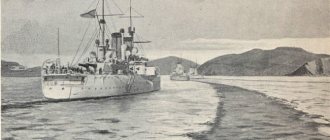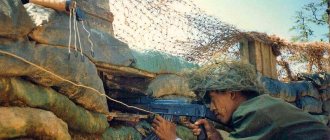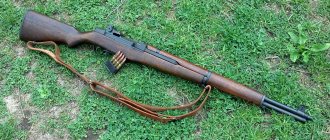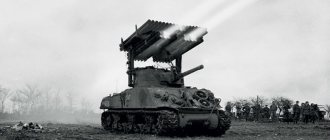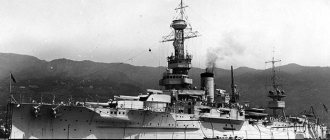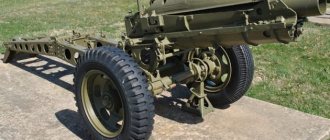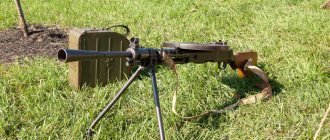Like many other wars of the 19th century, the Spanish-American War was caused by a struggle for colonies that Western powers considered their rightful property. The Spaniards were one of the best navigators in the 15th and early 17th centuries, which allowed them to create a huge colonial empire. However, they had competitors - first Portugal, and then England and the USA. Madrid gradually lost control over the occupied territories, and at the end of the 19th century, a struggle broke out for one of the main pearls of the Spanish empire - Cuba.
Causes of the Spanish-American War
The Spaniards failed to create a strong system of management of overseas lands that would combine loyalty to local residents and respect for natural resources. Madrid's excessively brutal exploitation of its possessions led to the gradual collapse of the Spanish colonial system. The first serious blow to Spanish rule on the other side of the Atlantic was the War of Independence, which broke out at the beginning of the 19th century in Latin America. Although Latin American freedom fighters had real reasons to overthrow Spanish rule (the dominance of the Spaniards in local governments, the exploitation of peasants, poverty, etc.), behind these events there was also England, which supported the rebels and later established no less harsh orders here.
In America, meanwhile, industry was rapidly developing, requiring a constant injection of new raw materials and financial resources. Huge enterprises and landholdings arose. Native American resistance had already been crushed, and all land on the North American continent became white property. Americans were very interested in the Caribbean islands, including Cuba, for a number of reasons:
- here it was possible to create naval bases that guaranteed the security of the US Atlantic coast and maritime trade;
- Cuba covered the North American isthmus and could be a good defense for the future Panama Canal;
- In the public consciousness and the speeches of populist politicians, the inclusion of Cuba and other nearby islands into the United States seemed a natural and completely logical act. The struggle for territories in the Western Hemisphere that were of at least minimal interest to Washington directly followed from the Monroe Doctrine.
Of course, the island was a desirable piece for the United States, and besides, the Cubans were opposed to Spanish rule. Back in the 1860s, local residents managed to establish republican rule for some time, but then the Spaniards still managed to bring the rebellious island into submission. But resistance continued; since 1895, a guerrilla war had been going on in Cuba against the Spanish crown. The Spaniards deployed a large military contingent to Cuba (about 150 thousand people), but the soldiers could not cope. American volunteers also arrived on the island to support the rebels. Increasingly, voices were heard in the United States calling on the government to intervene in the situation in Cuba, which happened at the end of the winter of 1898.
Military operations in the Philippines
Anti-Spanish uprisings began in the Philippine Islands, as did Cuba. The Americans took advantage of this to increase their influence in the region. On April thirtieth, an American squadron consisting of six cruisers approached Manila Bay. At dawn on May 1, the squadron approached Manila. It turned out that only merchant ships were moored in the bay, so the Americans turned south, where they found ten outdated ships.
A battle took place in which all Spanish ships were destroyed. Five ships were sunk by their own crews. American ships did not even receive a single serious damage in this battle. After this incident, the Americans made an agreement with the Filipino rebels against the Spanish. Within a month, Spanish resistance was broken. The independence of the Philippine Republic was declared on the third of July.
The Spanish controlled only part of the archipelago, but most of it was controlled by Filipino rebels. The Spanish troops suffered one defeat after another. For a time, only one large island remained under the rule of the colonial administration - Negros. After reinforcements arrived from the United States, American and Philippine troops jointly launched an assault. Just four hours later the Spaniards capitulated.
Course of events
Reason for war
On February 15, 1898, the American battleship Maine exploded in Havana Bay, killing 266 sailors. The US authorities blamed the Spanish side for the terrorist attack and declared war on Madrid. Only 12 years later it was proven that the tragedy was caused by the spontaneous combustion of gunpowder in the holds. Today, many researchers agree that the death of the battleship was a premeditated provocation on the part of America. This is evidenced by the fact that a weakened Spain did not benefit from starting a war with such a strong enemy, and by the fact that during the explosion almost all members of the officer corps survived, for some reason they were at that moment on the stern, which was practically undamaged during the disaster. .
Preparations for war and plans of the parties
Waging war for Spain was an extremely difficult task. The Spanish soldiers who arrived in Cuba were severely exhausted by partisan sabotage and disease. There was not enough food and weapons, discipline was extremely weak, and the actions of different units were not coordinated. Delivering new forces and supplies across the ocean to the ground army was very expensive and time-consuming. Therefore, the main combat operations in the war against the United States were entrusted to the fleet (which was significantly inferior to the US fleet). Spain did not have the strength or finances to support the ground units operating in Cuba, so the soldiers were left to their own devices. The United States, in turn, easily transferred people, provisions and weapons from the east coast to Cuba. The soldiers and sailors were well trained, and America's material resources made it possible to wage even a long war without much damage to the economy.
Madrid tried to prevent war and offer a truce. However, Washington demanded the immediate declaration of Cuban independence, which the Spaniards could not agree to.
The Americans' plan was as follows: to blockade the island from the sea and, with the help of a land army, to establish their control on it. Initially, the United States intended to seize other Caribbean islands under the auspices of the Spanish crown. But, despite the weakness of Spain, there was a danger of attack on American ports located on the Atlantic coast. The Americans still took into account that Spain, albeit weak and impoverished, was still considered one of the main maritime powers. Therefore, the United States chose to limit itself only to the capture of Cuba, where a flotilla headed by Rear Admiral William Thomas Sampson advanced.
Spain sent a squadron headed by Admiral Pascual Cervera y Topete based on the Cape Verde Islands (the Atlantic coast of Africa) to Cuba. Other ships undergoing repairs were to depart later directly from Spain itself. Cervera soberly assessed the state of the Spanish fleet. He noted the lack of shells and fuel, the high degree of deterioration of the ships, the malfunction of artillery pieces and the unreliability of the plating, so he did not want to immediately enter into a confrontation, but to wait until all the Spanish ships were completely ready for the expedition and gathered together. The admiral did not even have accurate maps of the West Indies (as the islands of the Caribbean were called in those days) and a general plan of action. It is quite possible that the purchase of additional ships and more scrupulous preparation for the expedition would have allowed Spain to change the entire course of this war. But the headquarters, meeting in Madrid, hurried the admiral and forced him to go to Cuba earlier than expected.
The United States closely monitored Cervera's movements and did not allow him to replenish coal reserves in ports lying on the route of the Spanish squadron.
Fight for Cuba
At the end of April, the Americans began the war by blockading the northern coast of the island and starting shelling the coast. Although little progress was made in the first days of the war, these measures helped strengthen discipline in the army and attract public opinion to the side of the government: many Americans were unhappy that the start of hostilities was constantly postponed. In the American press, any action of Sampson was presented as a feat, even if it was a senseless and ineffective shelling of port cities from which civilians did not have time to leave.
On May 1, the first battle of this war took place: near the Philippine Islands, which at that time also belonged to Spain, a battle took place between the American squadron of Admiral Devey and the Spanish flotilla of Admiral Monteno. Within a few hours, all Spanish ships were destroyed by powerful artillery fire. The Americans managed to land troops in the Philippines without any resistance and already in August made the islands part of their colonial empire. Local residents not only did not oppose this, but they themselves actively fought with the Spanish soldiers who remained in the Philippines.
On May 19, Cervera arrived at the port of Santiago, located on the southern coast of Cuba. The commander of the Spanish ground units, Marshal Blanca, was already here. American intelligence, which had worked well before, failed this time, and Sampson learned of the arrival of Cervera’s squadron only a week later. In a hurry, measures were taken to combat Cervera. American troops began to be transferred to the southern coast. The landing took place in chaos and confusion. If Cervera had decided to strike the Americans at this very moment, he would have been able to inflict great damage on the enemy army. However, the Spaniards were afraid to start a battle, so they ended up being blocked along with the fleet in the port.
Marshal Blanca insisted on breaking the blockade immediately. Locked in the city along with the land army, the sailors could not influence anything, while food supplies were running out. In addition, the squadron that was supposed to leave Spain was delayed (it later turned out that Admiral de la Camara, who led this flotilla, was unable to obtain enough coal and was forced to take his ships back to Cadiz).
On July 2, Cervera decided to take a desperate step and withdrew his ships (4 armored cruisers and 2 destroyers) from the port to engage in battle with the American flotilla (4 battleships and 1 armored cruiser). As in the Battle of the Philippine Islands, the outcome of the battle was determined by American artillery. While Cervera tried to maintain a uniform battle formation, the American ships made a variety of maneuvers that allowed them to take the most convenient positions for firing. The Spanish ships were one by one destroyed by a stream of shells, causing virtually no damage to the enemy squadron. Human losses were about 400 people, another 1,800 sailors and officers, including Cervera, were captured. Madrid had no choice but to start peace negotiations.
Battle of Santiago de Cuba
On July 2, local command received orders to break the blockade. One of the reasons was the lack of food among the besieged. When Spanish ships tried to break through the American forces, a large-scale naval battle took place. The Spaniards were almost completely destroyed. American casualties: one killed, ten wounded and injured. Spain lost much more people: more than three hundred dead, one hundred and fifty wounded, more than one and a half thousand prisoners. Only one hundred and fifty sailors were able to return to Santiago, but they too were soon forced to surrender.
An even more severe blow for the weakened metropolis was the complete destruction of the fleet participating in the battle. The best ships fought at Santiago de Cuba. This defeat meant not only the final defeat in the war, but also the actual loss of the status of a naval power. The US Navy was recognized as one of the leading in the world after this battle. But the Americans recalled the disorganization and poor shooting accuracy at the beginning of the battle. The US forces were able to achieve victory only because of the obvious superiority of manpower and the almost complete lack of military training of the Spanish fleet.
A few days later the bombing of Santiago began and the city surrendered. In total, 24 thousand Spanish soldiers surrendered in the south of the island. Already at the beginning of August, the American military, together with Cuban rebels, completely captured Cuba. At the end of July, another 16 thousand American troops were landed in the south of Puerto Rico. An offensive began, as a result of which the entire western part of the island was occupied. During the capture of Puerto Rico, the US military lost twenty-eight people wounded and only five people killed. These are miniscule losses.
Results of the war
On December 10, 1898, a peace treaty was concluded in Paris. According to him:
- The United States received the former Spanish colonies of Puerto Rico, the Philippines and Guam in exchange for 20 million dollars;
- Cuba was formally declared independent, but in fact American influence was established there; very soon a US military base appeared in Guantanamo;
- Spain paid the USA 25 million dollars.
Immediately after receiving the desired territories, the Americans began a decisive struggle with their former allies - the rebels who had once opposed the Spanish crown.
The end of this, in general, small and not very eventful war entailed large-scale changes. The old colonial empire fell and a new one emerged - stronger and more powerful.
Plans of Spain and the United States
In the Spanish-American War of 1898, the United States targeted Spain's colonies - the Philippine Islands and the island of Cuba. Possession of Cuba would give the United States dominance in the waters of the Atlantic Ocean on the approaches to the Isthmus of Panama. This canal was of great importance because it could provide the shortest route between the west and east coasts of America and would connect both oceans. Before this, the Americans several times offered Spain to buy out Cuba, but were invariably refused.
The Philippine islands off the coast of Asia also attracted the attention of Americans who were interested in the Far Eastern region, where American capital was firmly established. These islands could finally consolidate the economic achievements of the United States in the Far East. The Spanish-American War of 1898 was one of the initial stages in the growth of the Pacific conflict, because the interests of Japan, the United States and European states collided in the Pacific Ocean.
Spain began to lose the colonies that it inherited from the Age of Discovery. The country did not have sufficient economic and military resources to retain its territories. This time, the next in line were Cuba and the Philippines, which became objects of the imperialist desires of the stronger United States of America.
Consequences of hostilities
The consequence of the devastating war for Spain in the 19th century was the loss of territories that had been part of the maritime power since the era of the Great Discoveries. Spain, having lost the Philippines, lost the opportunity to defend its islands in the Pacific Ocean. So a year after the end of the Spanish-American War in 1898, they were transferred to Germany for monetary compensation.
For Spain, this was a painful blow, indicating the backwardness of the country. In the oppressive atmosphere of defeat, a generation of writers was formed, which is called the “generation of ’98.” The then twelve-year-old King Alfonso XIII was also affected by the crisis. Subsequently, he had to face a serious political (during the years of Alfonso's reign, four prime ministers of Spain were killed) and economic crisis. The state of Spain was also affected by the food crisis caused by crop failures. Then general strikes began and workers became more active.
The consequence of the Spanish-American War of 1898 was a change in the status of the Spanish language in the world. In the Philippine Islands, which came under US rule, the local population began to speak less Spanish. But Puerto Ricans, who received American citizenship in 1897, began to actively settle in large cities in the United States.
American capture of Guam
By the time the Spanish-American War began in 1898, there were no serious defensive structures on the island as they were unnecessary. After the first active hostilities in this military theater, the leadership of the US Navy attracted the armored cruiser Charleston, which led the expedition to capture Guam. At the end of June 1898, the Charleston arrived at the island.
Only one Japanese ship could be seen in the harbor. At this time, onlookers and officials gathered on the shore. The American ship fired several shots at the old fortress, but no visible damage was visible and there was no return fire. The shells flew past, and the captain of the island's marines said that the Americans were saluting, and sent a messenger to the capital with a message for the governor to return the salute. The island's delegation headed towards the American ship.
When the Spaniards boarded the Charleston, they learned that there was a war between the United States and Spain, and the cruiser had arrived to capture Guam. The Spanish officials were declared prisoners of war, and in the captain's cabin they immediately began discussing the terms of surrender, which took place the next day. More than fifty soldiers and two lieutenants from the local garrison were brought aboard the American ship as prisoners of war. The Americans also captured trophies (weapons).
